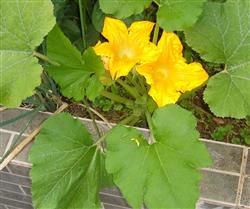Cultivation method of Brasenia schreberi
Water shield can also be called horseshoe because its shape is very similar to that of horseshoes. It is an aquatic plant, which mainly appears in the south of the Yangtze River. Because it is grown under certain conditions, it is not available for sale in many places, so it is a relatively precious vegetable, and I believe many friends do not know this kind of talent, so today we are mainly here to learn how to grow water shield. In the future, we can plant according to the specific situation.

1. Land selection and preparation
Water shield needs enough light to grow normally, so we should choose to plant it in the sunny place. the second is that it is easier to survive in places where the soil is acidic, so we need to measure the acidity and alkalinity when selecting the land. and it is best to choose in the area with rich mineral content in living water or water and no pollution, the silt in the field should be about 20 centimeters. When preparing the land, we can use the machine to turn the field, and then raise and reinforce the ridge, which is conducive to water storage and flood prevention, and finally sprinkle an appropriate amount of barnyard manure.
2. Sowing seeds at the right time
There are two ways of sowing, the first is seed sowing, and the second is cutting planting, but the sprouting rate of water shield seeds is special, so seeds are not usually used for sowing, and if seeds are to be used, they need to be carefully selected and then planted after seed treatment, so we still use cutting planting methods most commonly when planting. Water shield can be planted in both spring and autumn, but the best sowing time is in March and April in spring, followed by August and September in autumn.
3. Reasonable close planting
When using cuttings to sow seeds, we need to carry out reasonable close planting according to the fertility of the soil. Usually, we need to cut the stems of water shield into nodes of 10 centimeters respectively, and then insert them vertically into the soil according to a reasonable density. In general, we use the spacing of about 60 to 70 centimeters between rows and 50 centimeters between plants in the soil where nutrients are sufficient. For the more fertile land, we use a row spacing of about 50 centimeters between fish and plants to plant, and for relatively barren soil, we use a spacing of 30 to 40 centimeters. Only in this way can the soil be reasonably and fully utilized.
4. Water and fertilizer management
The water and water quality management of water shield planting is very important. Water shield needs a lot of water to grow. Usually, the water depth in the field needs to be adjusted according to seasonal changes. The water depth is generally about 15 cm when it is first planted in spring. After emergence, the water level can be increased appropriately, and the water depth can be controlled at about 25 to 35, while in summer, we need Ajing water to deepen to about 70 or 80 cm. Because the temperature is relatively high in summer, and in winter, the water depth will be as deep as 30 centimeters, so that water shield can grow normally. The growth liquid of water shield needs a lot of nutrients, but we can only apply fertilizer according to the growth of water shield. If the leaves turn yellow or the growth rate is slow in the field, we can add an appropriate amount of phosphate fertilizer containing trace elements to supplement nutrition.
5. Pest control
The most common diseases of water shield are leaf rot and Fusarium wilt. the main cause of the disease is water pollution, which can be prevented by purifying water quality and using Bordeaux solution. The more common pests are borers, green insects, etc., which can be sprayed with dimethoate milk, followed by a large number of solid snails and flat snails, we can spread tea cakes to kill or determine to kill.
- Prev

Cultivation method of gray vegetables
Cultivation method of gray vegetables
- Next

What if the zucchini in the greenhouse only blossoms but doesn't bear fruit?
This is mainly caused by physiological obstacles: first, the partial application of nitrogen fertilizer in the base fertilizer promotes the excessive growth of zucchini, the increase of leaf area and serious shade. Second, the temperature in the greenhouse is too low or too high. Third, there is insufficient moisture or too much humidity in the greenhouse. Such an environment will greatly inhibit the vitality of pollen and style.
Related
- Where is it suitable to grow horseradish in China? it is expected to see the middle altitude horseradish in Alishan.
- How to prevent tomato virus disease reasonably? (Control methods included)
- Many people like to plant towel gourd on the balcony. What are the main points of this method and management?
- What crops can chili peppers be mixed with?
- Fertilization techniques and matters needing attention in Tomato
- What are the grafting techniques for peach seedlings in spring?
- Harm and control methods of root swelling disease of Chinese cabbage
- What are the pests of sweet potatoes? How to prevent and cure it?
- Symptoms, causes and Control methods of navel Rot in Tomato
- The cause of "Cucumber rotten bibcock" in Farmers' planting Cucumber and its Control Plan

